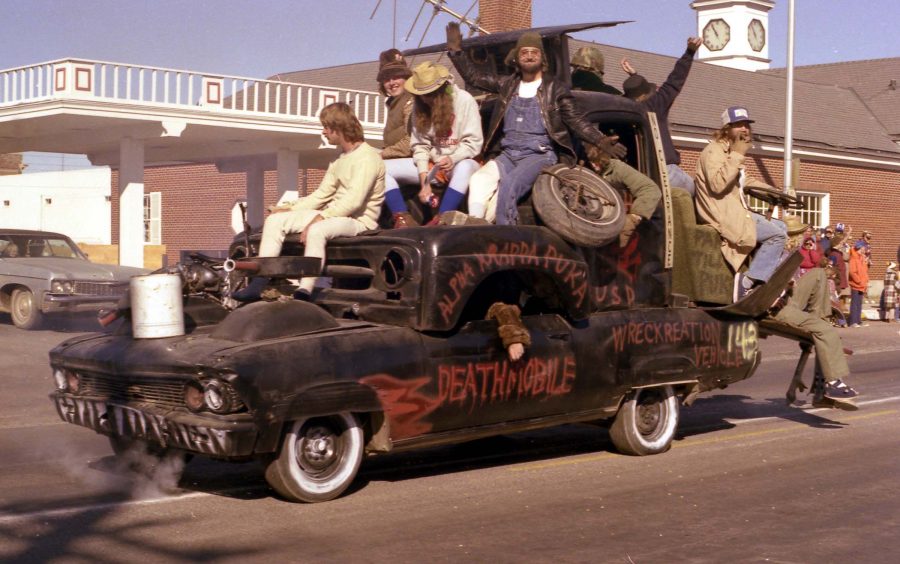As time passes, things change. The Hobo Day parade at South Dakota State University is no exception to this philosophy.
“Floats aren’t as elaborate as they used to be … the golden age was probably in 50s and 60s,” said Chuck Cecil, class of ‘59 and former employee of SDSU. “The quality hit a steady decline in the late 60s.”
Cecil’s recollection isn’t mere nostalgia. The Digital Library of South Dakota’s Hobo Day collection is brimming with baby-boomer era photos of elaborate floats depicting swans, globes, harps, the American Revolutionary War and even Jesus Christ.
“Kids knew how to build parade floats from their high school homecomings … and spent weeks building their float,” he said.
Hobomobiles were another favorite. Students constructed large, multi-tiered scaffolding on old cars, resulting in a ramshackle jungle of boards and hobos. But eventually, things got out of hand, Cecil said.
“Students would build them nine feet tall one year, then 12 the next. Pretty soon they got three car lengths wide,” he said.
After one contraption nearly gave way in 1984, the university made the decision to ban unsafe Hobomobiles.
Float building became even more nonchalant thereafter.
“We used hay bale flatbeds with a flat backdrop. Very few moving parts on the float, cute slogans, lots of crepe paper and Sharpie markers,” 1992 alumnus Dana Rausch said.
The trend began to change with the centennial Hobo Day celebration in 2012, when, according to Hobo Day Student Entries Coordinator Andrew Schaeffer, the Hobo Day Committee started the “Fantastic Floats” program. The program raises money to help student organizations who apply for grants pay for parade float supplies and offers a brief video seminar on float building.
This approach has produced some success, due in part to the competitiveness of Greek life.
“There have been a few decent floats, but nobody balls quite as hard as we do,” Delta Chi member Matthew Bruxvoort said.
Logan Zeisler, another Delta Chi member, agrees with Bruxvoort. His favorite float was a 2015 pirate ship.
Both said Delta Chi normally shares their float with a sorority to split costs and they are currently building a “legendary” 12-foot replica of the Campanile for this year’s parade.
Floats may be improving, but Cecil thinks full revival seems unlikely.
“50s, 60s kids didn’t have as much to do and enjoyed the camaraderie … but I understand times change and people get busy,” Cecil said.
Although the floats are relatively simpler nowadays, Seisler said students still do enjoy the camaraderie of building a float.



















